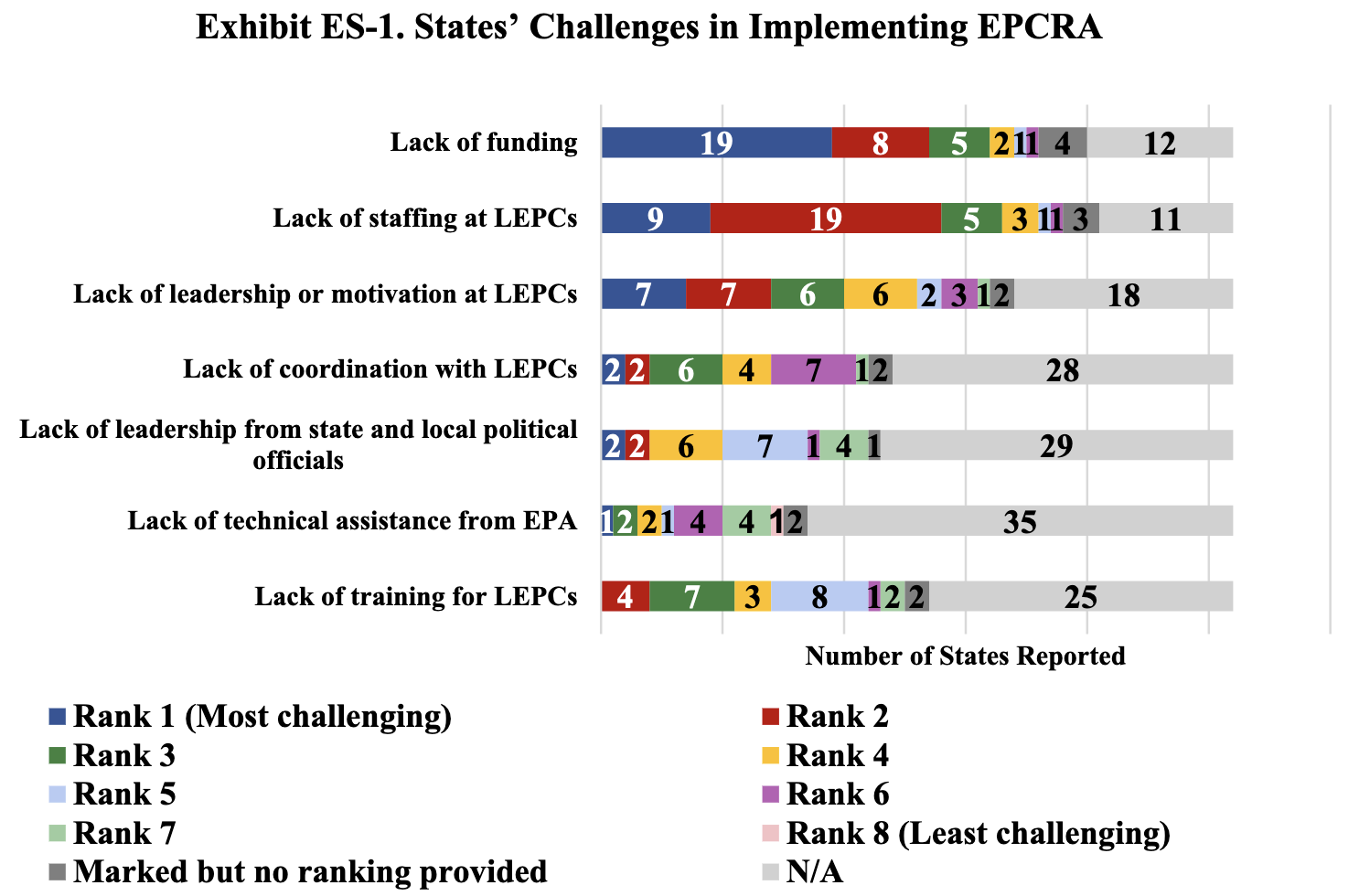I am sharing this report to highlight the weaknesses in the ability of the states to comply with the new emergency response exercise requirements in the RMP rule (40 CFR Part 68.96 Emergency response exercises).
In October 2021, the Office of Emergency Management1 (OEM) of the U.S. Environmental Protection Agency conducted a survey of the State Emergency Response Commissions (SERCs) in each state and territory of the United States. Thirty-five years after the enactment of the Emergency Planning and Community Right-to-Know Act of 1986 (EPCRA), EPA conducted this survey to gather information on current practices, challenges, and gaps, including successes and best practices in implementing EPCRA.
As EPCRA marked 35 years since its creation, along with its recent amendments under the America’s Water Infrastructure Act of 2018 (AWIA), EPA decided to conduct the SERC survey to learn how well the program is currently being implemented at the state and local levels. This is the first survey of the SERCs that EPA has conducted. However, in 1994, 1999, and 2008, EPA conducted surveys of the Local Emergency Planning Committees (LEPCs).
Of the several responsibilities that the statute requires, the states ranked three (3) tasks as their top priorities:
- Managing and analyzing Tier II data (29 states)
- Assisting LEPCs in developing and/or exercising response plans (25 states)
- Assisting facilities in complying with EPCRA (21 states)
One of the questions in the survey listed several potential challenges for the SERCs to implement EPCRA, and the respondents were asked to prioritize their challenges. The responses for those obstacles that were either the most challenging or second most challenging are as follows:
- Lack of staffing (28 states)
- Lack of funding (27 states)
Take note of these challenges, especially the 2nd graphic below to understand the impact Lack of Funding and Staffing have on the NEW RMP Emergency Response requirements!

